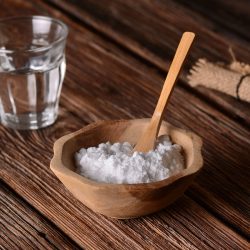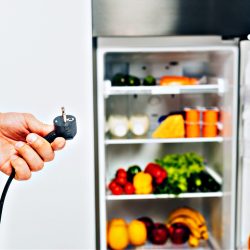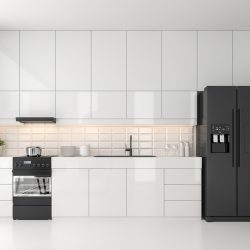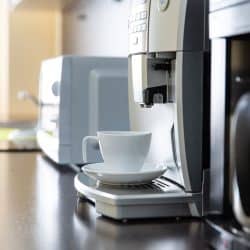Mold is a persistent problem. It can appear anywhere. Though, it usually has to be in the right conditions. One area where it can grow is inside the fridge. If you want to remove mold from there, let's go over the details.
Like any cleanup, you want to start by removing all the items in the refrigerator. Remove all the shelves too. Then, mix baking soda with water to create a mold-killing mixture. Using the baking soda mix, scrub any areas with mold.
Apart from the inside, mold can also grow on the fridge seal. If you need help cleaning that area, you'll need more details. We'll also cover ways to prevent mold from developing in your fridge again. For more information, keep reading.
How To Clean the Mold Problem
Start the process by removing everything in the fridge, including shelves and drawers. This way, you can get a good idea of what you will have to clean.
You need to remove the mold entirely. If you leave a speck, it will keep coming back. The other aspect to think about is the source of the mold. We'll cover this topic later.

In any case, to solve the mold problem, you need to eliminate the source. This way, you can maintain a mold-free environment. Put foods and drinks away in a cooler as a temporary home.
Preparing a Cleaning Solution
You can't use a random cleaner to remove the mold. After all, you put your food in the fridge. The last thing you want to do is introduce toxic chemicals to the foods you consume.
A food-safe cleaner will be necessary for this process. That food-safe cleaner should be able to disinfect and kill mold. A mixture of warm water and baking soda should work. You may also use vinegar to clean the fridge.
Though, these two solutions are limited. In other words, they can't effectively kill every type of mold. So, if the vinegar or baking soda solution doesn't work, you might need to use a harsher cleaner.
The alternative would be to call a professional. A diluted bleach solution of one cup of bleach to one gallon of water should work.
Click here to see this cleaner on Amazon.
You may also use RMR-141 to disinfect the area and kill the mold. Still, be careful using these harsh cleaners.
Cleaning the Fridge
The three readily available items are vinegar, baking soda, and bleach. Use the solution of your choice and spray it on the refrigerator surfaces. These are the mixtures you can use:
- Bleach: One cup to one gallon of water.
- Baking soda: One-quarter of a tablespoon to a spray bottle. Shake until the baking soda dissolves.
- Vinegar: Dilute a 1:1 ratio of water.
Spray your mixture of choice to the affected surfaces. Let it sit for one to two minutes. If you're using harsher cleaners like RMR-141, follow their instructions instead.
In addition, make sure you're wearing protective gear. So, wear gloves and a mask if you have a sensitive respiratory system.
After one to two minutes pass, scrub the surface with a rag. Follow up with a clean, damp rag. Then, dry the area with a clean paper towel.
Use this solution to clean the shelves and drawers too. You can follow the same steps above. Once the shelves and drawers are clean, you can put them back in place.
Here's a YouTube video demonstrating the process:
Cleaning the Seal
The fridge seal is another essential component to clean. You can clean it the same way you would a shelf or drawer. So, spray the cleaning solution and let it sit for one to two minutes.
Afterward, scrub, wipe, and dry the seal with clean rags or cloths. It's worth noting that you might have to replace the seal. Rubber is porous.
Therefore, mold can penetrate the surface and grow into rubber. In this situation, it's better to throw the seal away. Instead, you'll need a replacement seal.
How To Find The Mold Source

Before getting rid of the mold, you need to find the source. Otherwise, your cleaning efforts will go to waste.
No matter where it grows, having mold is never ideal. It shouldn't be growing in your fridge. If mold appears, it indicates there's something wrong.
The two culprits are the fridge and the food inside. It might be limited to one of those two. The easiest to check would be the food.
Mold doesn't appear out of thin air. It grows when it finds the right conditions. One of the most common sources is moldy food. Maybe you didn't know a food item was rotting inside.
As mold grows on the food, it can also become airborne. Thus, it starts within the food but spreads all over the fridge. Throw any contaminated items away to prevent the spread of mold.
Checking the Fridge
Sometimes the problem isn't the food. It's a combination of moisture and cleanliness. Water might seem harmless in the fridge. However, condensation isn't a problem to take lightly.
If there's visible moisture in your fridge, it indicates your fridge has a problem balancing its temperature. So, the areas that you will have to check are the seals, temperature, and humidity.
The Fridge Seal
The seals on your fridge door should be airtight. This way, it can keep a consistent temperature inside. Seals have trouble keeping air out when there are gaps or cracks present.
So, check if there's any gap between the seal and the cabinet. Otherwise, it could be tears and cracks causing the problem. If your seal has any damage, you need to replace it with a new one.
Temperature
Ambient temperature matters. Although the fridge is good at keeping the air inside, it needs a proper environment to function correctly. So, if you keep your fridge in the garage, it might not be warm enough outside for it to function correctly.
Ideally, you should set the fridge in an area with temperatures around 50 to 95 degrees Fahrenheit. This way, the outside temperatures can't mess with the cooling performance.
Humidity
Humidity also plays a role in condensation. If the humidity is too high in the area, it can affect the performance of your fridge.
Move it to an area with lower humidity levels. Otherwise, it's better to leave the fridge in a place with air conditioning.
Hot Foods
It might seem harmless at first. But introducing too many hot foods inside the fridge can create a condensation problem. It can raise the temperature inside. So, the refrigerator will work harder to bring it back down.
However, it will take time to bring the temperature back to normal. So, condensation will occur in that timeframe. At worst, it can introduce a mold problem.
Mold thrives in moist and damp conditions. So, it's best to avoid creating conditions that favor mold growth.
Can A Moldy Fridge Be Saved?
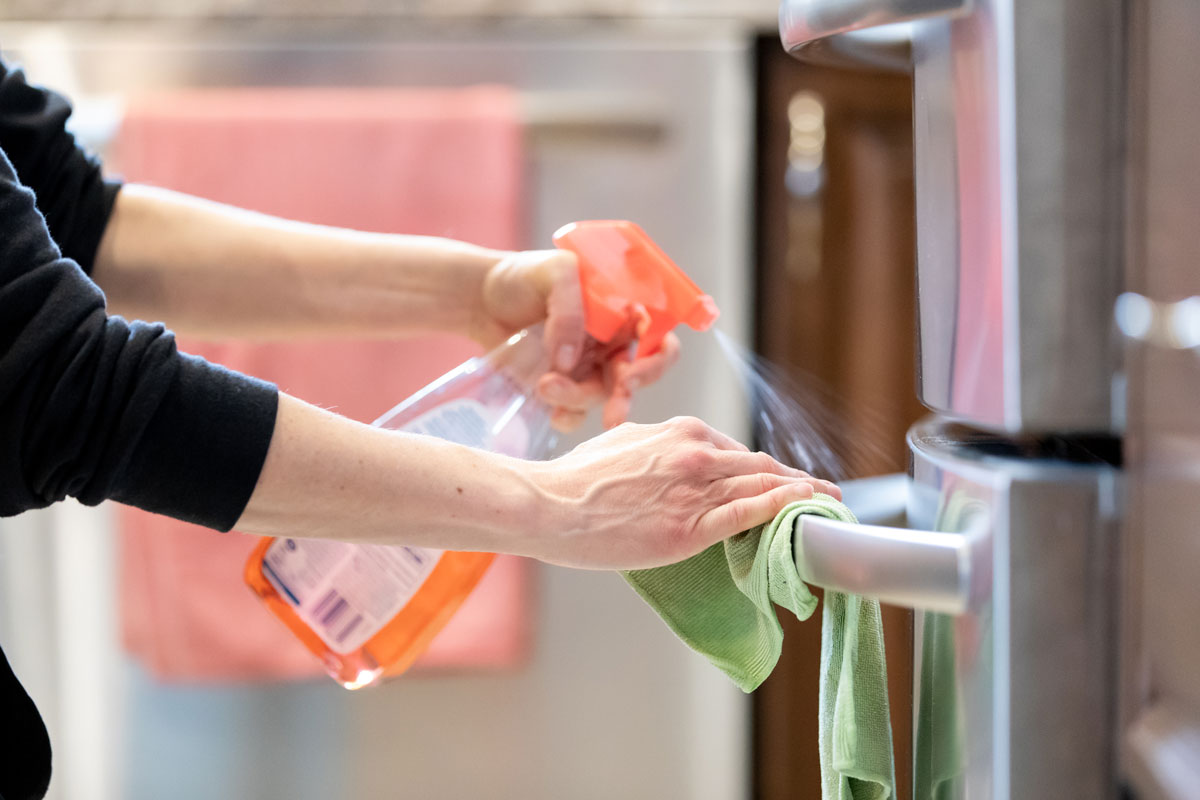
Sometimes you can't clean mold once and be done with it. Mold is persistent. It will reappear if there are bits of it lingering.
Yes, you can attempt to save your fridge. Cleaning the inside surfaces, seals, shelving, and drawers should be enough. However, there are instances where you might need to get a new one.
It's a rare occurrence. But, mold can get deeper inside the fridge. More specifically, it can infect the motor, water dispenser, and other components.
You can try to clean these areas. In most cases, it's impossible. If the mold gets inside these components, replace your fridge. Otherwise, you will be dealing with a constant mold problem.
Can Mold In A Refrigerator Make You Sick?
It isn't common to see mold in your fridge. Since it's typically cold inside, does mold pose any danger? Unfortunately, mold is a concern no matter where it grows.
Mold has the potential to make you sick. Though, it can mimic allergic reactions. Thus, some symptoms you may encounter are coughing, wheezing, shortness of breath, nausea, vomiting, diarrhea, headaches, fatigue, etc.
People with allergies are the most at risk for mold exposure. In any case, it's crucial to disinfect and clean any area with mold.
Is It Safe To Bleach Your Fridge?

As we know, bleach is a harsh cleaner. You shouldn't ingest or inhale it for a long time. Still, it's one of the cleaners we reach after if we need to disinfect a surface.
So, it raises the question, is it safe to use in your fridge? The answer would be that it depends. Some fridge manufacturers advise against using bleach.
It can potentially harm the materials inside and contaminate your foods. Others aren't against its use in a refrigerator. Even the CDC recommends disinfecting your fridge using a diluted bleach solution.
So, look at your owner's manual to see if bleach is safe to use for your specific fridge. If you plan to use it, make sure to clean it out of the fridge entirely.
In Closing
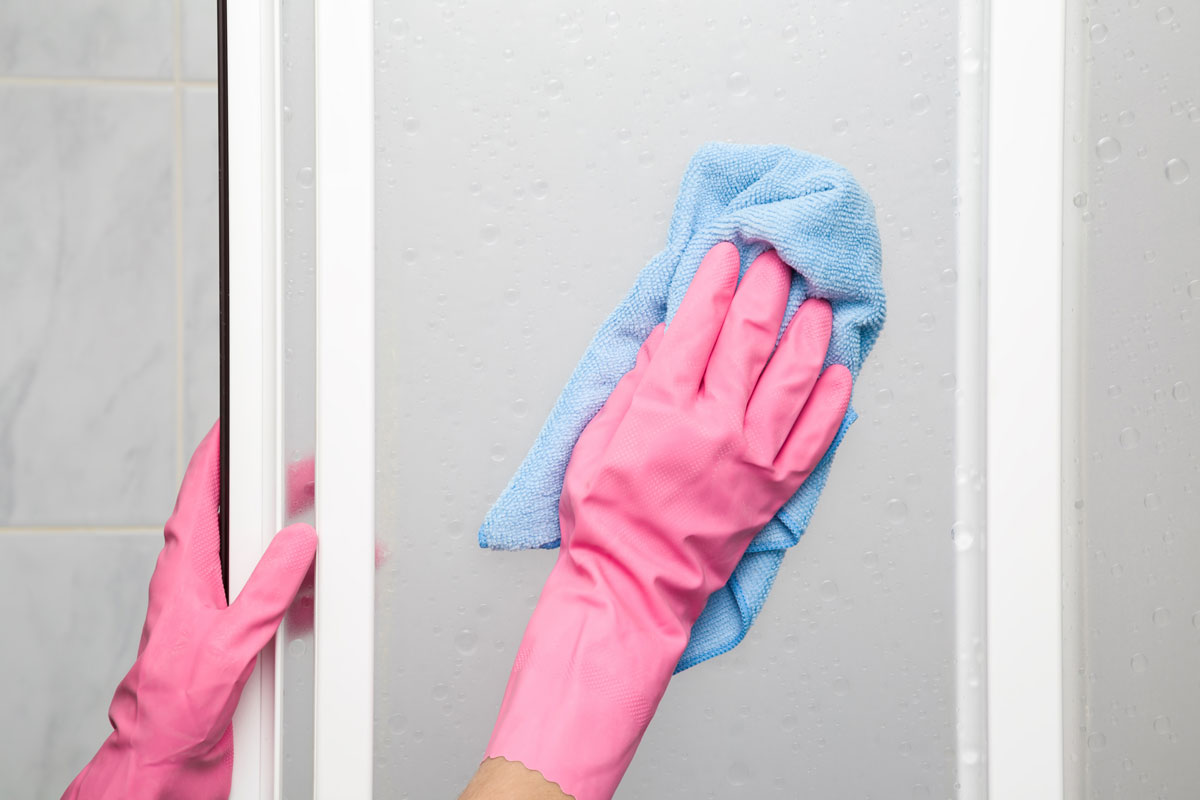
It's never a good sign to see mold growth. When it happens, it's crucial to remove it from the source. Cleaning the affected areas afterward is also an essential part of the process. We hope you found the information above helpful.
Before you go, do you have a mold problem in your dishwasher? We can give you some removal advice. For more information, check out:
How To Get Rid Of Mold In A Dishwasher
Do you own a Keurig machine? Are you curious to know if mold can grow in one? To learn more, check out:

![Woman cleaning the inside wall of a fridge, How To Clean Mold From Fridge [Inc. Seal]](https://kitchenseer.com/wp-content/uploads/2022/06/How-To-Clean-Mold-From-Fridge-Inc.-Seal-667x1000.png)

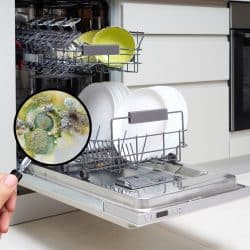
![Close-up of baking soda in a glass jar. Bicarbonate of soda - Is Baking Soda Edible? [Raw And Baked In Recipes]](https://kitchenseer.com/wp-content/uploads/2022/11/Close-up-of-baking-soda-in-a-glass-jar.-Bicarbonate-of-soda..-250x250.jpg)
